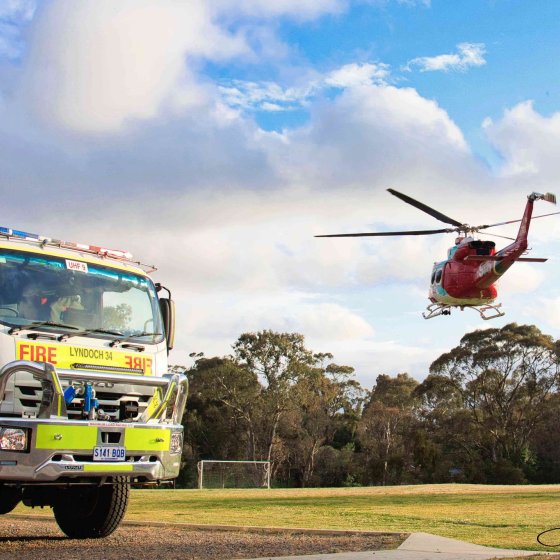Bushfires
Australia has observed an increase in the annual frequency of dangerous fire weather days across Australia.
Fires cause a number of impacts including:
- destruction of habitat and biodiversity
- runoff of sediment and nutrients into waterways
- human health impacts from smoke and destruction of property and potential loss of life
- carbon emissions that may contribute to climate change. It was estimated that around 830 million tonnes of carbon was released during the 2019-20 bushfires across Australia. In comparison, 413 million tonnes of carbon was released from human sources during 2019. Although plant growth following bushfires acts as a carbon sink, more frequent and intense bushfires may mean ecosystems do not have the chance to fully recover
- impacts to businesses, for example, tourism, livestock and crops.

The Forest Fire Danger Index (FFDI) is a measure of fire weather conditions and fuel availability, which is influenced by recent rainfall. The increase in FFDI has been variable across the state since 1978. The highest rates of increase in FFDI are observed in the mid north, southeast and far northeast. The far northwest has seen the lowest increases.
South Australia experienced exceptionally high fire danger weather conditions in 2019, which decreased in 2021 and 2022 with the relatively wet and cool conditions experienced during this time. The long-term trend in the accumulated FFDI is expected to continue to increase with climate change with increasing temperature and decreasing rainfall.
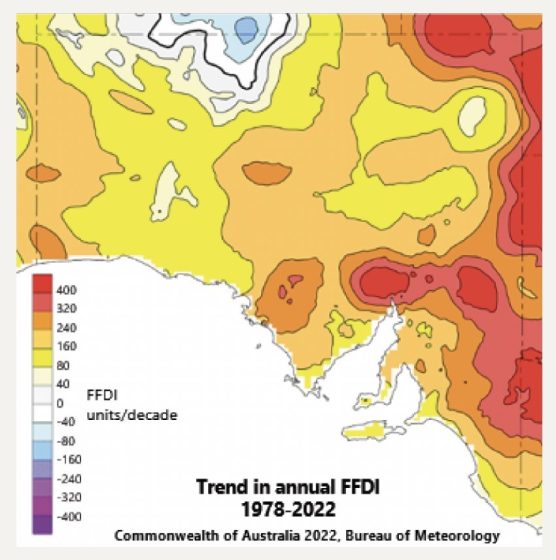
Long-term trends of increasing temperature, longer heat waves and less rain associated with climate change will increase the risk of bushfires. It is predicted that by 2030, the number of extreme and catastrophic days are likely to increase as follows:
- 10% in Eyre Peninsula, Yorke Peninsula and the Mount Lofty Ranges
- 30% in the Murraylands, Riverland and South East of South Australia
- 30% in the northern arid lands of South Australia.
The Country Fire Service (CFS) has warned that increases in capacity and capability are required to respond to more intense fires that are likely to occur.
History of bushfires in South Australia
Prescribed burns are undertaken by the DEW and the CFS to reduce fuel, protect habitat and biodiversity and regenerate bushland that relies on fire to germinate or sprout. During the 2022–23 prescribed burning season, DEW undertook 76% of their planned prescribed burns across South Australia, which is higher than the average of 70% each year over the past decade.
Cultural burns have been used by Aboriginal people for thousands of years to care for, restore and nurture Country. Cultural burns remove fuel loads and, therefore, increase the resilience of Country to withstand bushfires. They burn slow and at a low heat, which means they do not destroy habitat and they allow time for animals to move away. A reduction in severe bushfires also means that less carbon is released into the atmosphere. The importance of cultural burning is being recognised and undertaken in regions of South Australia including:
The 2019–20 Bushfires
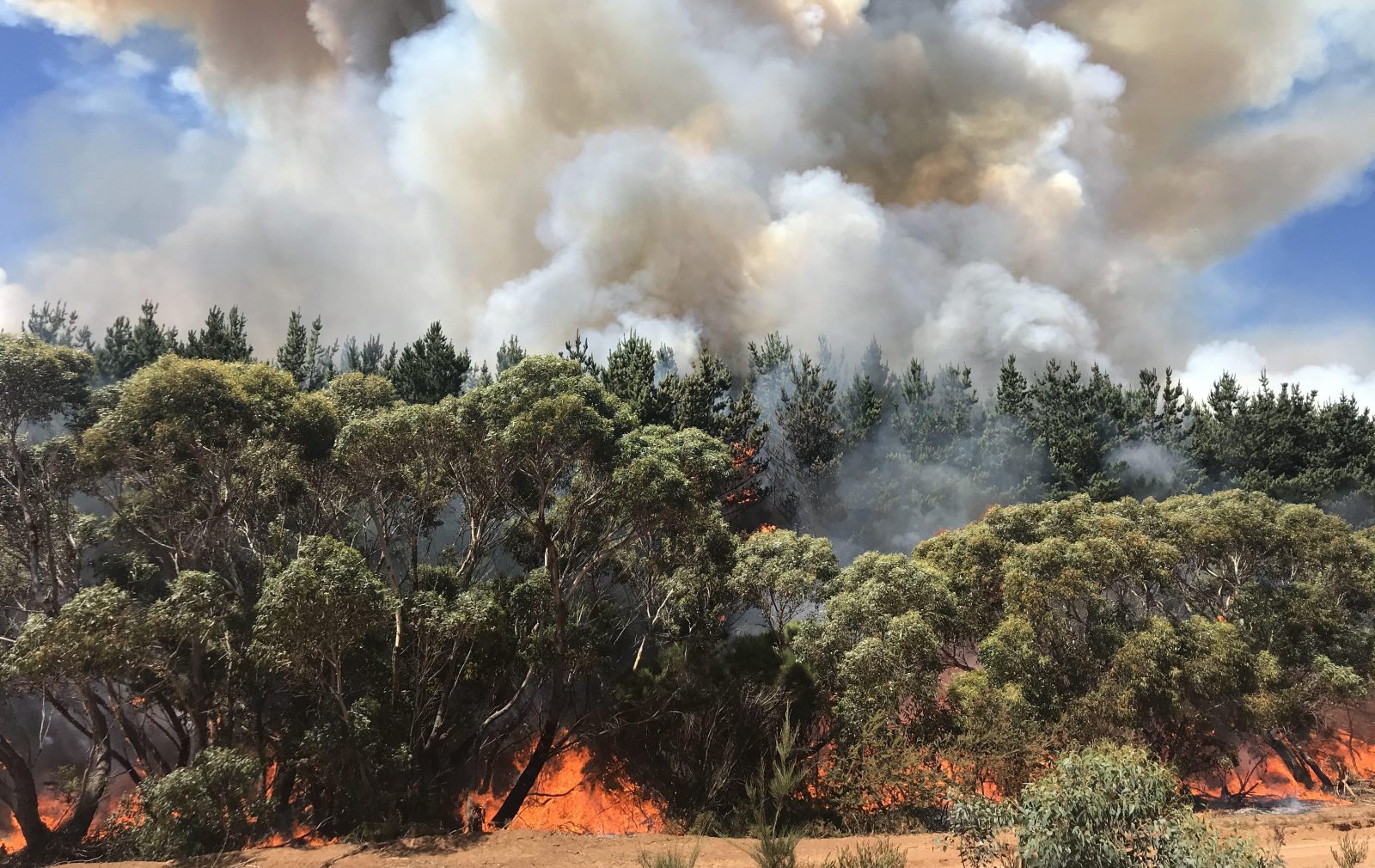
The South Australian bushfire season of 2019–20 was one of the worst the state has ever endured with the devastating loss of lives, homes, properties and livestock. Fires blazed in the Adelaide Hills, Kangaroo Island, Yorke Peninsula, Eyre Peninsula and the South East.
Dangerous fire weather conditions continued from spring into summer. In December, strong winds, low humidity and high temperatures for several days again combined to create dangerous bushfire conditions, with some areas having catastrophic fire danger ratings. Nearly all of South Australia recorded its highest-ever accumulated forest fire danger index for December.
The fires resulted in impacts on biodiversity, air quality, businesses and industries, livestock, residential properties and, sadly, lives. The impact on air quality in South Australia was visible during the time when the fires were burning, and the air quality monitoring stations around the state recorded very high levels of particulate pollution. Waste generated during bushfires also needs to be considered, with over 50,000 tonnes of bushfire waste having to be managed for the 2019–20 fires.
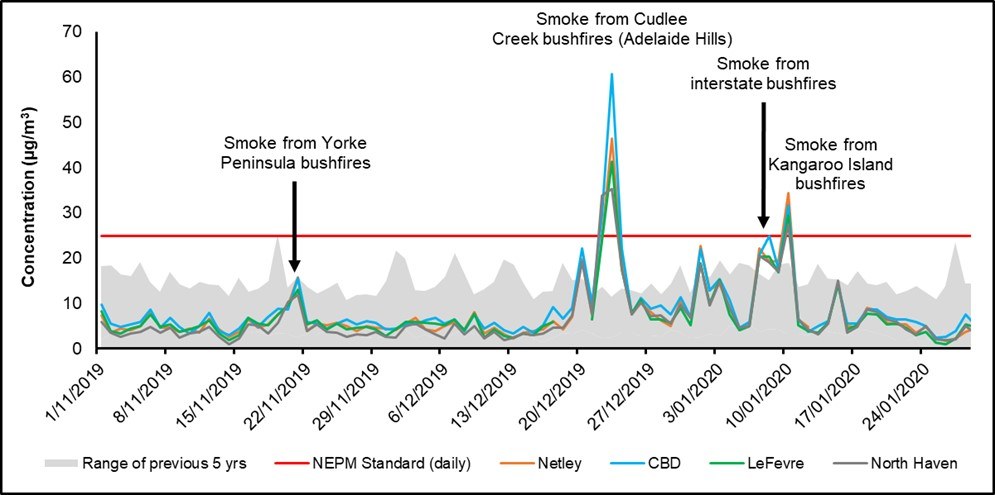
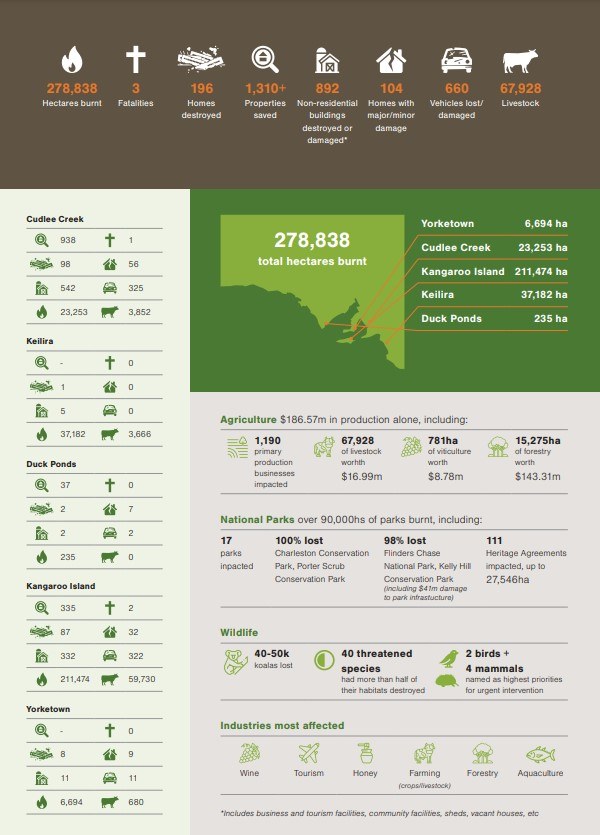
The South Australian Government commissioned an independent review in relation to the 2019–20 South Australian bushfires. The review made 15 recommendations to build capacity, capability and resilience for future bushfire seasons. A significant amount of funding and resources has been directed towards delivering on the recommendations in the report.
A Royal Commission Report into the National Natural Disaster Arrangements was undertaken in response to the 2019–20 bushfires across Australia. In summary, the report provided a number of recommendations, including more resources to respond to bushfires (for example, aerial firefighting capacity), a national approach to bushfire response, increased communication to help people prepare for bushfires and a greater role of Indigenous knowledge in mitigating bushfire risks. Australia has now adopted a fire danger rating system that is consistent across all states and territories to help us all prepare for future bushfire events. However, more needs to be done given that bushfires are likely to become more frequent and intense as climate change progresses and with regard to other climate drivers such as El Niño.
The South Australian Government responded
to the Royal Commission report and continues to partner with the Commonwealth and state and territory governments to implement the agreed actions at the state and national level.
